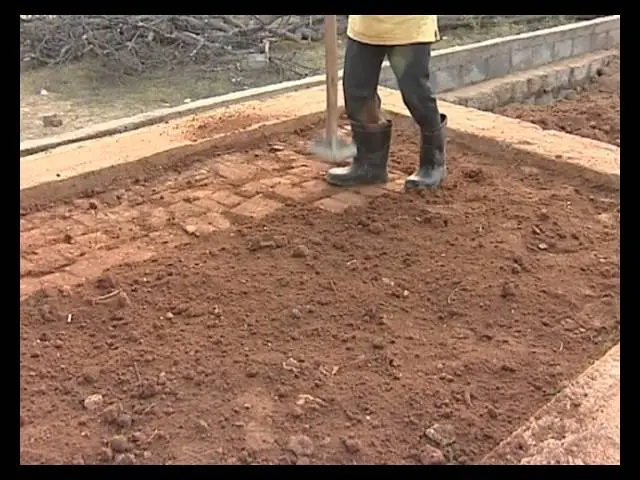Muram flooring is a traditional type of flooring commonly used in houses in villages. Muram flooring features unique mud slurry that is typically used as a sub-base material for road construction and is also used in building construction as a flooring material.
Muram flooring is made by mixing muram with cement and water to form a slurry, which is then applied to the surface of the floor. The slurry is then leveled and compacted to form a smooth and even surface. Once the muram flooring is dry, it can be painted or coated with a sealant to protect the surface from moisture and wear.
Muram flooring is known for its durability, resistance to moisture and its ability to withstand heavy loads. It is commonly used in industrial buildings, warehouses, and factories. It is also commonly used in the construction of rural and low-cost housing, as it is relatively inexpensive compared to other types of flooring materials.
Muram flooring is also considered to be eco-friendly as it is made from natural soil and does not require the use of synthetic materials.

Steps to prepare muram flooring
Steps for constructing a Muram Floor:
- Prepare the subgrade by laying a layer of rubble boulders or hard broken bricks. Compact the layer firmly and ensure that sufficient water is added during the process.
- Apply a 150mm layer of Muram on the prepared subgrade, consolidating and watering it as you go. Then, spread a 25mm layer of fine Muram on top and sprinkle the entire surface with water.
- Compact the surface with a wooden rammer or thapies and ensure that a 6mm layer of water is formed on the top.
- Trample the surface with labourers’ feet and level it until the cream of Muram rises to the top. Leave the surface to dry for a day.
- Repeat the ramming process for three more days, starting each day by sprinkling water over the surface.
- Apply a paste of cow dung to the surface and continue ramming for two days.
- Finally, finish the surface with a cement and cow-dung plaster mixture of 1:4 and wipe it clean immediately.
Also Read: 7+ Different Floor and Flooring Types
Advantages of Muram Flooring
Moisture Resistance: Muram flooring is also resistant to moisture, making it suitable for use in areas that are prone to dampness or flooding.
Cost-effective: Muram flooring is relatively inexpensive compared to other types of flooring materials, making it an affordable option for construction projects.
Eco-friendly: Muram flooring is made from natural soil and does not require the use of synthetic materials, making it an environmentally friendly option.
Heavy Loads Capable: Muram flooring is able to withstand heavy loads, making it suitable for use in areas where heavy machinery or equipment is in use.
Easy to Install: Muram flooring is relatively easy to install, making it a practical option for construction projects where time and resources are limited.
Also Read: Differences Between Wallboard, Drywall and Cement Board
